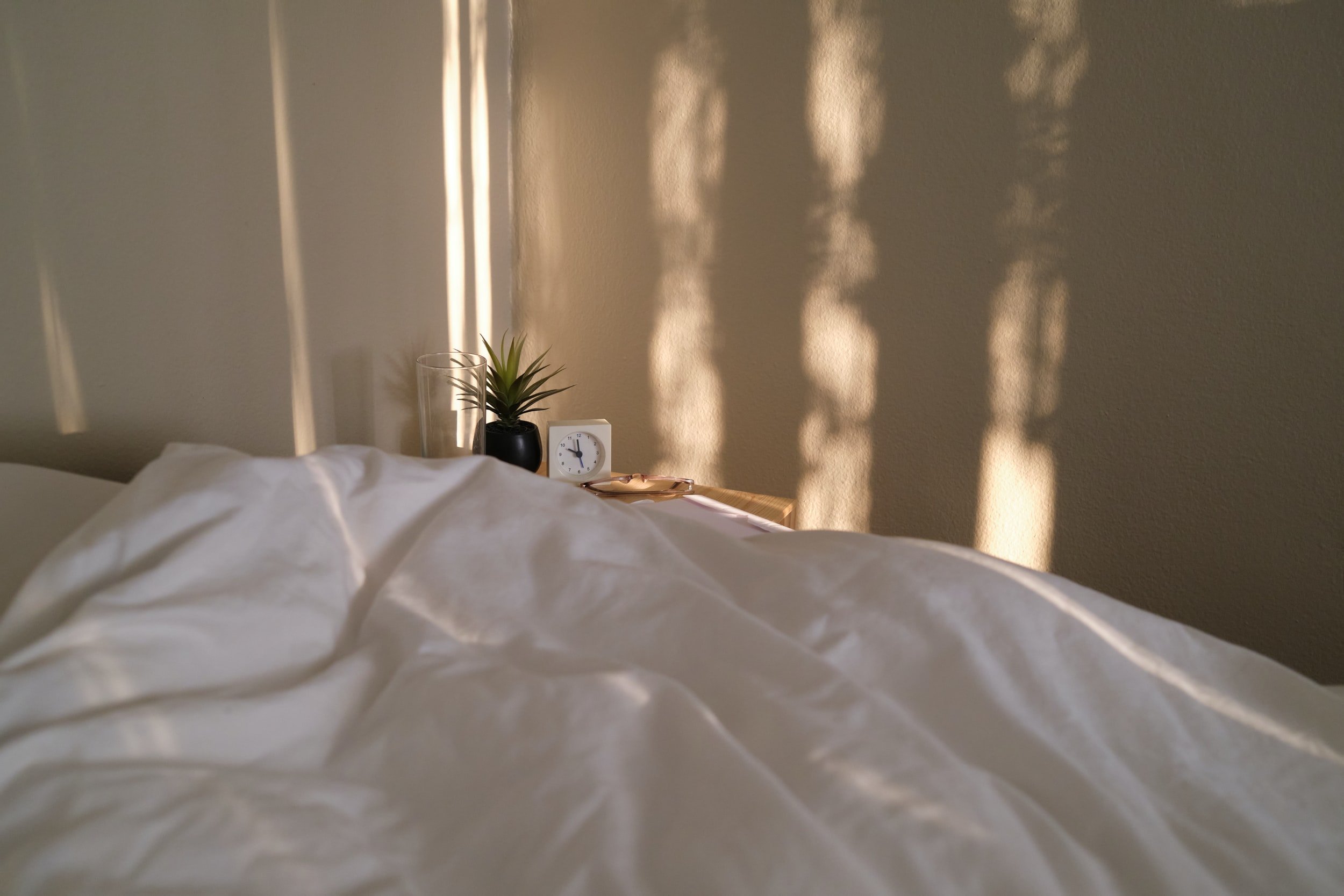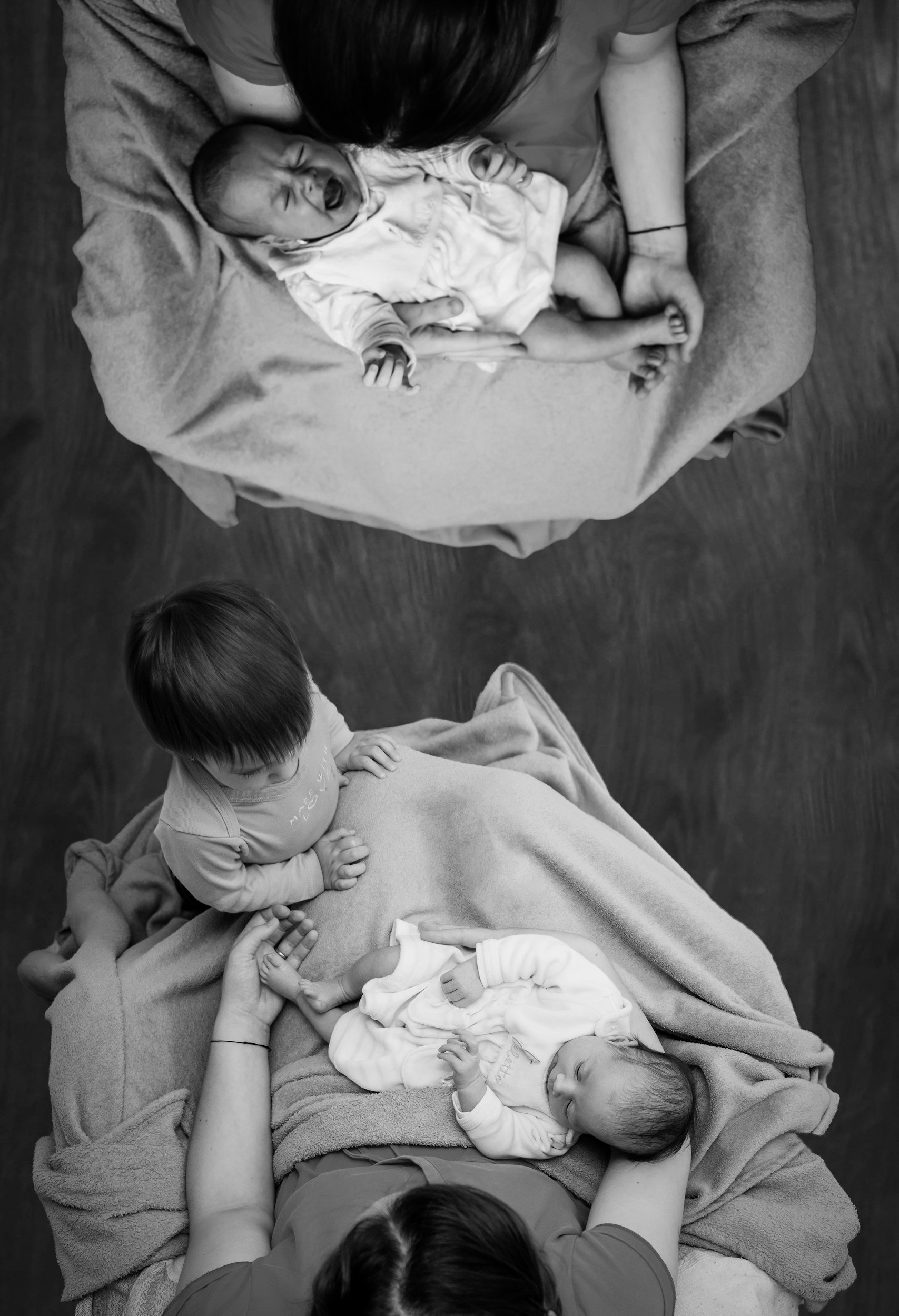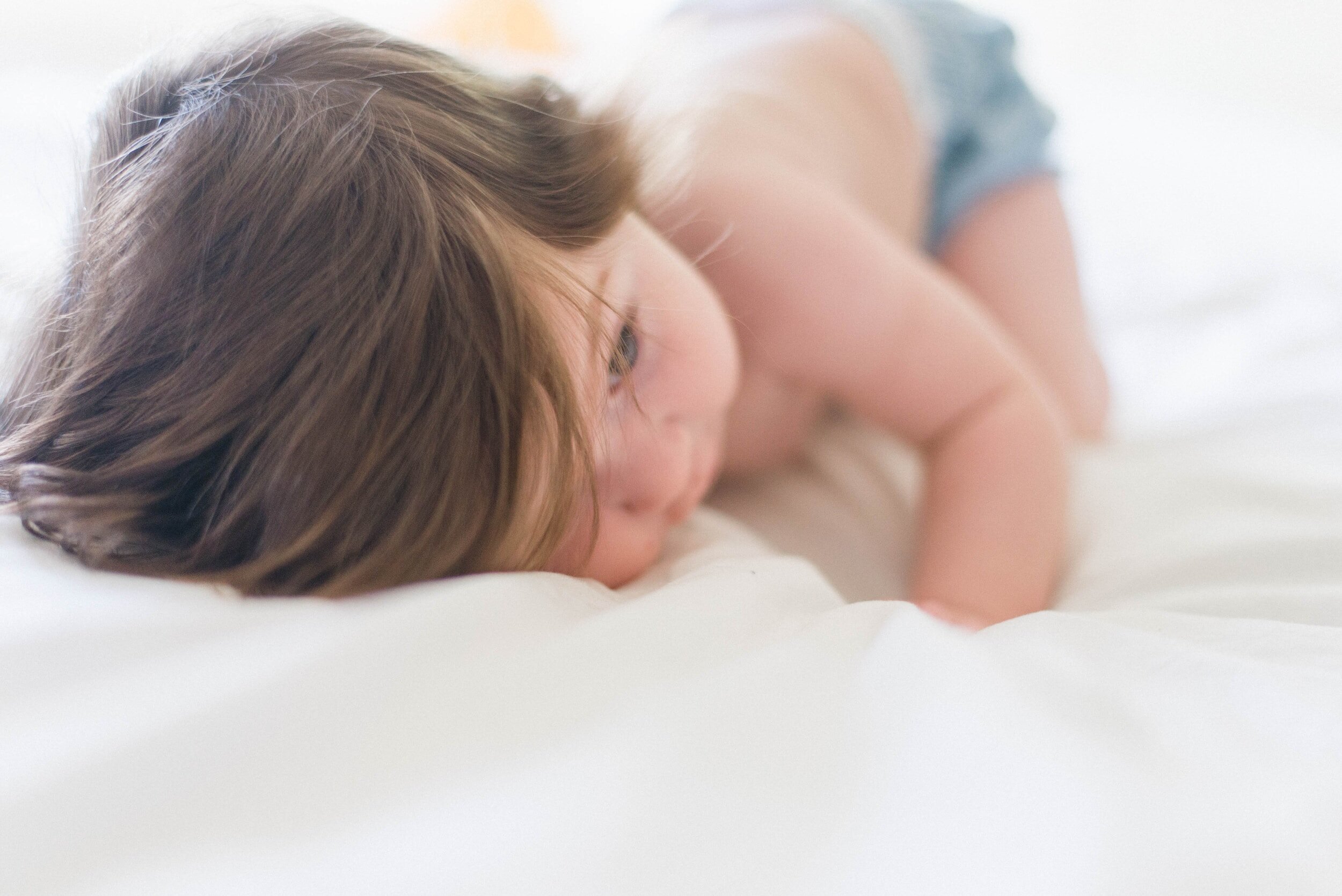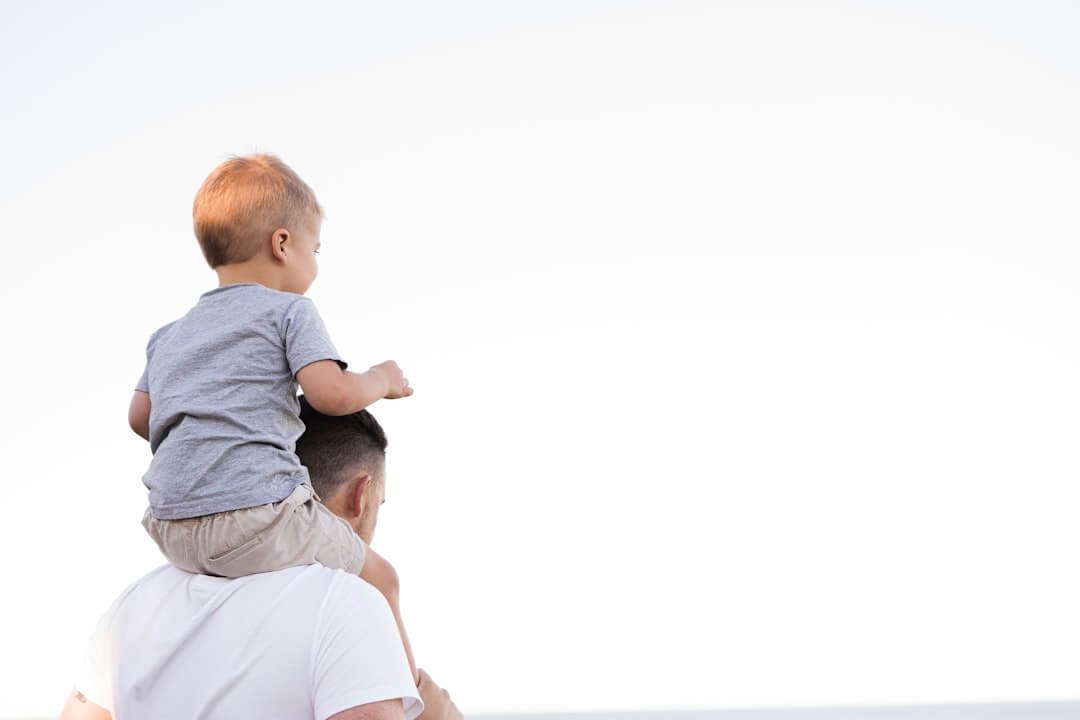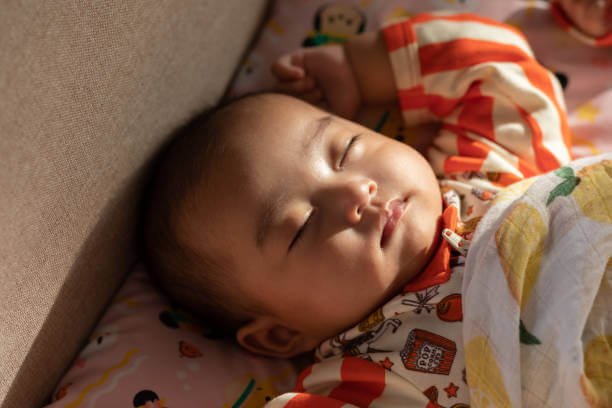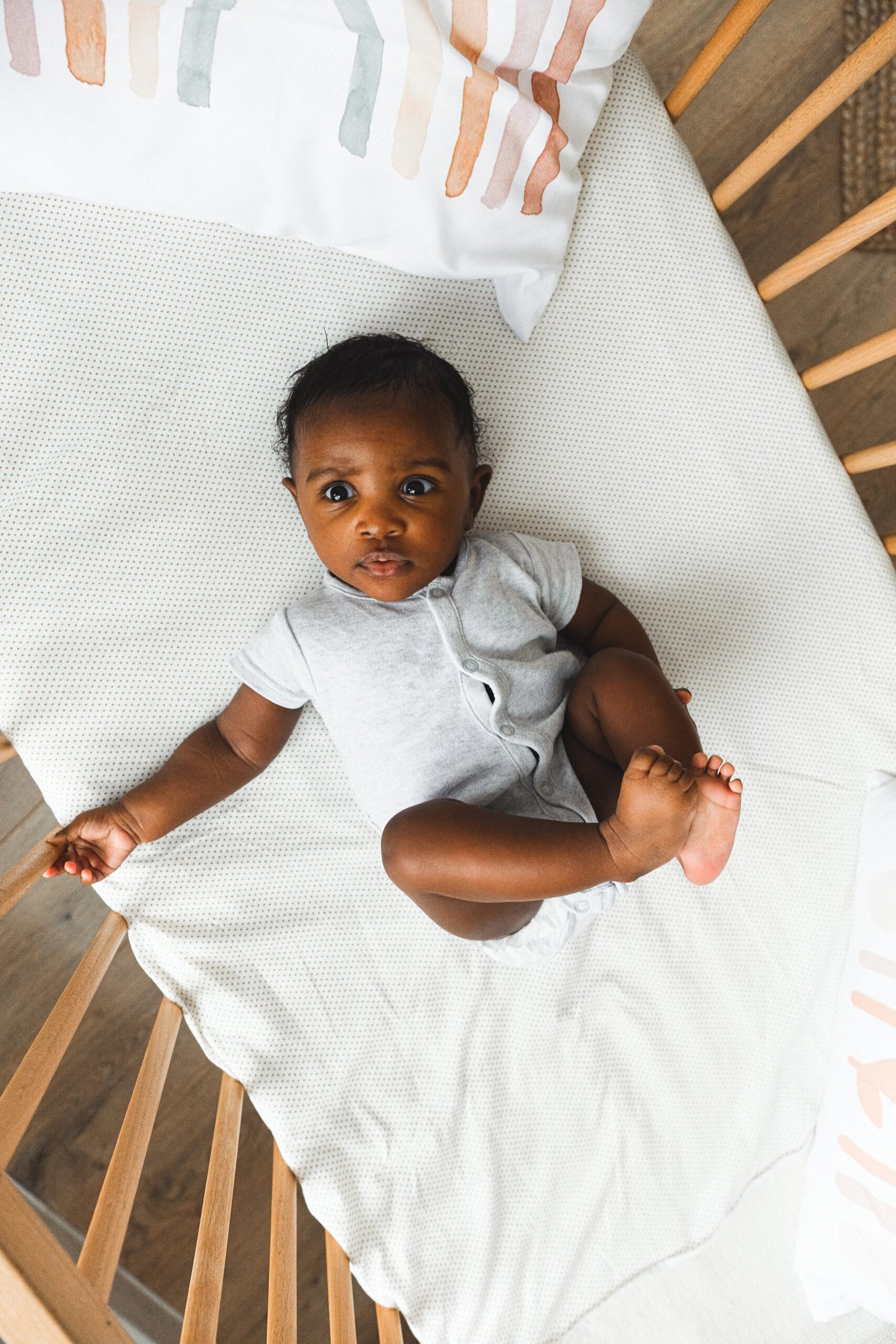I'm Rachael
Mom of 3 & Baby Sleep Expert with Big Sis Energy
& I’VE DONE ALL THE RESEARCH FOR YOU ALREADY.
Better sleep for the entire family
BROWSE COURSES
hey!
how to transition your baby from a bassinet to a crib
in this post:
Are you getting ready to move your newborn from the bassinet to the crib for the first time? I know this can be such a nerve wracking transition! For most babies, this transition will occur within the first few months, however it depends on the make and model of your bassinet, the height and weight of your baby, when they start rolling, etc. Generally speaking, here are the signs it may be time:
-
Weight Limit: Most bassinets have weight limits that you can find in your instruction manual or online, and once your baby reaches that limit, it’s time to transition to a crib. This is typically around 15 to 20 pounds (6.8 to 9 kilograms), but it’s important to check the specific weight limit recommended by the manufacturer of your bassinet.
-
Age and Development: Babies typically outgrow bassinets by around 4 to 6 months of age, although some babies may outgrow them sooner. Additionally, if your baby starts showing signs of rolling over or becoming more mobile, it may be safer to transition them to a crib with more space and sturdy rails.
-
Sleep Patterns: If your baby is starting to outgrow their bassinet or is consistently waking up during the night and seems uncomfortable, it may be a sign that they’re ready for the transition to a crib. A crib provides more space for movement and may help improve sleep quality for some babies.
-
Parental Comfort: Some parents prefer to keep their baby in a bassinet in their room for the first few months for convenience and peace of mind, especially if breastfeeding. However, once you feel comfortable with your baby sleeping in a separate room, transitioning to a crib in their own nursery may be appropriate. Keep in mind that the AAP currently recommends parents “room in” with baby for at least 6 months, if not 12. Another option could be to transition to a pack-n-play or crib that is in your room at first, and then moving it to a nursery when you feel ready.
-
Personal Preferences: Ultimately, the decision to move your baby from a bassinet to a crib depends on your individual circumstances and preferences as a parent. Trust your instincts and choose the timing that feels right for you and your baby.
It’s important to monitor your baby’s growth and development and consider factors such as safety, comfort, and sleep quality when deciding when to make the transition. If you’re unsure about when to move your baby to a crib, you can consult with your pediatrician for personalized guidance based on your baby’s unique needs and circumstances.
When you do decide it’s time, here are a few tips that can make the transition go more smoothly:
-
Gradual Transition: Start by having your baby nap in the crib during the day before transitioning to overnight sleep. This helps them become familiar with the new environment in smaller, less overwhelming doses.
-
Room In First: As stated above, sometimes parents aren’t ready to have baby in their own room yet but the bassinet is getting too small. You can have the crib in your bedroom as a way to get baby used to their new space while still being in a familiar area. If your crib won’t fit or you just don’t want to move it back and forth, a pack-n-play is another safe option that can be a bridge between bassinet and crib sleep.
-
Establish a Bedtime Routine: Calm, consistent bedtime routines can help provide some predictability for your baby when there are other changes happening. If you haven’t yet, establish a calming bedtime routine that you can follow every night. This routine can include activities like a warm bath, gentle massage, reading a bedtime story, or singing a lullaby.
-
Create a Safe and Comfortable Environment: Make sure the sleep space is cozy and safe. Use just a fitted crib sheet, and ensure the crib mattress is firm and fits snugly. Remove any loose blankets, bumpers, pillows or toys that could pose a suffocation hazard. Be sure the room isn’t too chilly or too hot, and use things like room-darkening blinds, a sound machine, etc. to create a calm environment.
-
Familiar Scents: Wear baby’s crib sheet in your shirt for a few days to get your scent on it. This can provide comfort and reassurance to your baby, helping them feel secure in their new sleeping space.
-
Stay Close Initially: For the first few nights, consider placing the crib near your bed so your baby can still feel your presence. This proximity can help ease any anxiety your baby may feel about sleeping in a new environment. Another option, if you have space in the nursery, is to “camp in” with them, sleeping next to their crib on an air mattress, day bed etc.
-
Offer Comfort and Reassurance: If your baby wakes up during the night and seems unsettled, offer comfort and reassurance. Patting their back, speaking softly, or gently rocking the crib can help soothe them back to sleep. If they continue to get upset, pick them up and rock, sway, or offer a feeding.
-
Be Patient and Flexible: Remember that transitions take time, and every baby is different. Be patient with your little one as they adjust to their new sleeping arrangement. It’s okay if there are setbacks or if the transition takes longer than expected.
-
Monitor Your Baby’s Comfort: Pay attention to your baby’s cues and adjust as needed. If they seem uncomfortable or restless in the crib, consider making changes to the bedding, room temperature, or bedtime timing/ routine to better suit their needs.
-
Take Care of Yourselves: Lastly, remember to take care of yourselves as parents. Transitioning your baby to a crib can be emotionally taxing, so be sure to prioritize rest, self-care, and support from loved ones during this time of adjustment.
If you need more support and guidance with making this big change, check out the Hey Sleepy Baby Ultimate Crib & Floor Bed Guide. In this best-selling guide, you’ll learn:
-
How to set up your crib or floor bed & room for safety
-
How to create an ideal environment for sleep
-
How you should be swaddling & dressing your baby for sleep
-
How to prep & introduce the crib or toddler bed for the very first time
-
How to use sleep associations (YES you can still nurse to sleep if you want to!)
-
How to decide on a crib vs. floor bed
-
How to create a nap or bedtime routine you can stick to!
-
Day-by-day guide of starting to practice the crib/ bed sleep for naps & bedtime
-
How to support your child’s emotion through the process
-
Troubleshooting common issues
-
Keeping your own mental health in tact
-
Safe cosleeping guidelines (just in case)
and more! This guide comes as a PDF with all the info you need PLUS audio files so you can listen podcast style- cause you’re a busy parent! Check out testimonials from parents just like you.
was this helpful? save for later!

Featured
When daylight saving time ends, we “fall back” one hour, meaning that sunrise and sunset will occur an hour earlier. How will this affect your baby’s sleep?
Responsive sleep tips and support for parents of multiples or twins.
What are floor beds? When to use them? And How to use them?
binge reads
We think you'll love these
You deserve to the
baby stage, not just "survive it."
And you DON'T have to sacrifice your values, ignore your instincts, or force yourself to follow a method you don't align with just to get your baby back to sleep.
I’m here to help you create a restful, sustainable sleep environment that honors both your baby’s needs AND your own (without the stress OR the guilt!) because, no, you don’t have to choose between the two.
enjoy!
BABY SLEEP COURSES →
BABY SLEEP CONSULTS →
Wish you could help your baby sleep better without resorting to sleep training? Download my FREE guide to a good night’s sleep and learn 8 simple, science-backed tips for supporting your child’s needs.
Traditional sleep training methods don’t have to be your solution to better sleep.
SLEEP TRAINING ISN’T THE ONLY WAY TO GET GOOD SLEEP
Hey, I'm Rachael and Hey, Sleepy Baby is for parents who want to get their nights back, without sleep training their babies.
NO ONE TOLD US POD
explorING the untold truths of parenting
